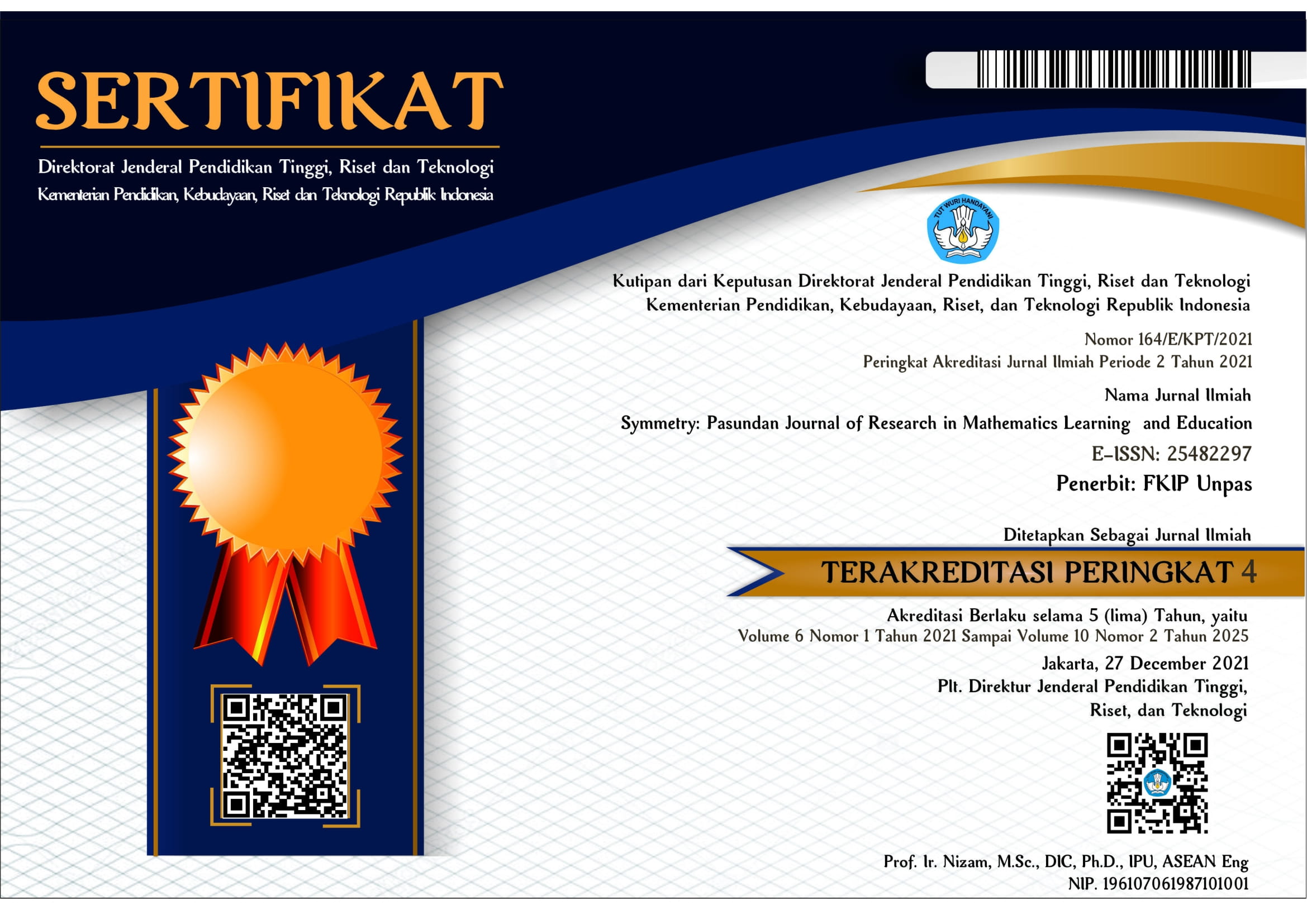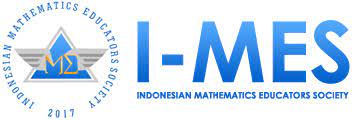Analisis Learning Obstacles pada Materi Pecahan Siswa Kelas IV Sekolah Dasar
DOI:
https://doi.org/10.23969/symmetry.v7i2.6386Keywords:
Didactical obstacle, epistemological obstacle, learning obstacle, ontogenic obstacle, pecahanAbstract
This study aims to analyze the existence of learning obstacles that occur in students, especially in class IV fraction materials and efforts to overcome these learning obstacles. This research uses descriptive qualitative research method. The sample in this study was 17 grade IV students at SDN Kopo 04 for the academic year 2021/2022 with purposive sampling using a sampling technique. The source of data in this study is the primary data source and for data collection the researchers used test and interview instruments. Data analysis was carried out descriptively by reducing data, presenting data, and drawing conclusions. Based on the results of research and discussion, it was found that a learning obstacle in the ontogenic obstacle category was that students did not understand how to operate addition and subtraction on fractions. Students also experience epistemological obstacles if they are faced with a different problem context from the one exemplified by the teacher in the book and misunderstand the meaning of the question. In addition, there were didactical obstacles where students were not able to place the numerator and denominator, students also did not know the definition of fractions and the concept of fractions as part of a whole and fractions as part of a group, because it was caused by inappropriate teacher teaching. It was also found that efforts to overcome learning obstacles were found such as holding remedials, enrichment, using the RME (Realistic Mathematics Education) learning model, often doing practice questions, and being able to use other learning media besides books. Efforts to overcome the learning obstacles found are expected to be realized to minimize the learning barriers experienced by students.
Downloads
References
Brouseau, G. (2002). Theory of Didactical Situation in Mathematics. Dordrecht: Kluwer Academic Publishers.
Keijzer, R. (2003). Teaching Formal Mathematics in Primary Education. Fraction Learning as Mathematising Process. PhD Thesis: Vrije Universiteit Amsterdam.
Kemendikbud. (2022). Capaian Pembelajaran Mata Pelajaran Matematika pada Kurikulum Merdeka (Keputusan Kepala Badan Standar, Kurikulum, dan Asesmen Pendidikan Kementerian Pendidikan, Kebudayaan, Riset, dan Teknologi Nomor 008/H/KR/2022). Jakarta: Kemdikbud.
Lortie-Forgues, H., Tian, J., & Siegler, R. S. (2015). Why Is Learning Fraction and Decimal Arithmetic So Difficult?. Developmental Review, 38, 201-221.
Moleong, L. J. (2010). Metodologi penelitian kualitatif. Bandung: Remaja Rosdakarya
OECD. (2018). PISA 2021 Mathematics Framework (Second Draft). Paris: OECD Publishing.
Pane, A. & Dasopang, M. D. (2017). Belajar dan Pembelajaran. FITRAH Jurnal Kajian Ilmu-ilmu Keislaman, 3(2), 333-352.
Stacey, K. (2011). The PISA View of Mathematics Literacy in Indonesia. IndoMS J.M.E., 2(2), 95-126.
Sudjana, N. (2010). Dasar-dasar Proses Belajar. Bandung: Sinar Baru Algensindo.
Sugiyono. (2016). Metode Penelitian Kuantitatif, Kualitatif dan R&D. Bandung: PT Alfabeta
Zulkardi, & Putri, R. I. I. (2006). Mendesain sendiri soal kontekstual matematika. Konferensi Nasional Matematika XIII Semarang, 1–7.
Downloads
Published
Issue
Section
License
Copyright (c) 2022 Symmetry: Pasundan Journal of Research in Mathematics Learning and Education

This work is licensed under a Creative Commons Attribution 4.0 International License.
Hak Cipta sepenuhnya ditangan jurnal.




















